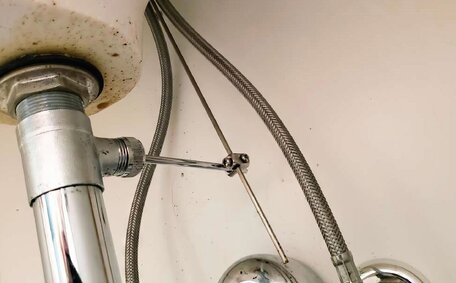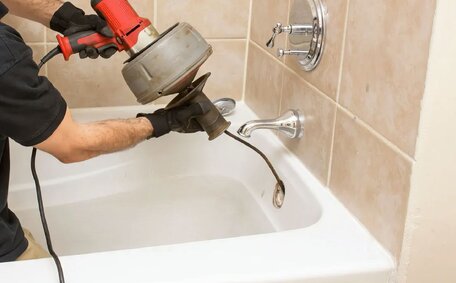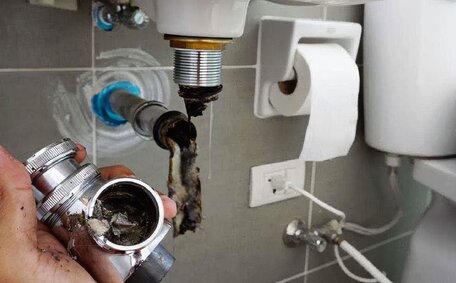Introduction to the History of Drain Systems
Drainage systems have played a crucial role through human history. By 2500 BCE, the Indus Valley civilisation had developed advanced drainage and sewage infrastructure vital for waste water management and public health, setting a precedent for modern plumbing.
Historically, societies have endeavoured to redirect water to avert contamination and illness. The Romans crafted extensive sewerage systems and the Middle Ages saw rudimental drainage solutions. Marked progress came in the 1800s with the advent of subterranean sewage infrastructures.
The fast-paced urbanisation of the 20th century catapulted the advancement of drainage systems. Current innovations in stormwater management and eco-friendly draining strategies not only prevent flooding but also conserve water. Such historical insights are essential for plumbers tackling today’s drainage challenges.
Early Drainage Systems in Ancient Civilizations
Some of the world’s earliest sophisticated drainage systems were developed in ancient civilizations like Rome and the Indus Valley.
The Romans excelled in developing sewerage and drainage systems employing clay and lead pipes to efficiently direct waste and rainwater, playing a substantial role in enhancing public health and sanitation.
Around the same time in the Indus Valley (in modern Pakistan), nestled in the south east region of Asia, elaborate drainage and water supply systems were installed across houses and streets. Archaeological evidence shows an integrated system of covered drains, manholes, and soak pits that would treat and carry away wastewater.
These principles set an early precedent for managing drainage in urban areas. The innovative solutions of the Romans and Indus civilizations laid crucial groundwork for drainage functionality that is still applied in modern plumbing and sewerage systems worldwide.
Advancements in Drainage During the Middle Ages
In contrast to the advanced drainage systems of ancient civilizations, the Middle Ages saw a period of stagnation and decline in plumbing innovations. With the fall of the Roman Empire, much of the engineering knowledge around public sanitation infrastructure was lost.
The Middle Ages saw castles and villages rely on basic drainage methodologies. Open gutters and trenches would carry wastewater and sewage through the streets, posing major risks to health. Cesspools under castles often overflowed into water sources, contaminating our sources of clean water and spreading diseases.
Indoor plumbing was typically disregarded across medieval Europe, with even the homes of the wealthy lacking running water and toilets. This neglect contributed to poor public health and rampant outbreaks of diseases like cholera and typhoid fever.
The pivotal moment was 1596 when English nobleman Sir John Harrington invented an early version of the flush toilet, marking strides in improving drainage. Mediaeval sanitation woes underscored the need for advancements in public health engineering.
Although the Middle Ages saw a regression in drainage innovation, eventually it set the stage for a resurgence in modern drainage design.
Modernization of Drainage Systems
The Industrial Revolution triggered significant improvements in drainage systems. With rapid urban growth came the need for more efficient waste and stormwater management in cities.
In the mid-1800s, modern plumbing took off with the mass production of cast iron pipes. These durable pipes allowed engineers to construct an intricate underground drainage network of sewer lines. Indoor bathrooms and toilets also became common during this era.
By the 20th century, separate systems for stormwater and sanitary sewers were established, preventing rainwater from mixing with sewage and significantly enhancing public health. Screening facilities were also introduced to remove solid waste before water discharge.
Modern urban planners deploy advanced drainage systems to mitigate flooding. Sustainable technologies like porous pavement, rain gardens and green roofs help absorb even more stormwater. Computerised control systems now monitor water flows, with regulators managing discharges.
The innovative drainage solutions emerging from the Industrial Revolution have paved the way for the effective wastewater management systems we rely on in modern cities.
Plastic Pipes and Linear Drains
Plastic piping marked a major advancement for modern drainage systems when it was developed in the 20th century. Lightweight and flexible plastic pipes like PVC and ABS offered improved flow rates and simplified installations compared to traditional iron or clay pipes.
Currently, plastic pipes are foundational to 99% of Australian household plumbing, thanks to their sturdiness and ability to resist corrosion, making them ideal for wastewater and fresh water systems.
The French drain exemplifies modern plumbing advancements. Its linear configuration with grated inlets collects more surface water than traditional drains, mitigating the risk of localised flooding.
Key benefits of linear drains include:
- Increased drainage capacity
- Sleek, minimalist aesthetics
- Easy installation along walls or directly on the subsurface
- Decreased slip hazards in moist environments
The development of versatile modern pipe materials coupled with efficient drain designs continues to advance drainage functionality for both residential and commercial buildings.
Shift Towards Sustainable Urban Drainage Systems
The shift towards sustainability has intensified in recent decades, with traditional stormwater drainage techniques giving way to methods that curb flash flooding, erosion, and water pollution.
Sustainable Urban Drainage Systems (SuDS) offer effective drainage while also benefiting the environment. Instead of piping water away, SuDS use a 'manage it where it lands’ philosophy. On-site features like rain gardens, green roofs, swales, and permeable pavement absorb and filter rainwater.
Key advantages of SuDS over conventional piped drainage involve:
- Reduced flood risk from stormwater surges
- Enhanced groundwater recharge
- Lower contamination from road runoff pollutants
- Drought resilience through stored stormwater
- Greener urban landscapes that reduce heat
Many councils now encourage or mandate SuDS in new developments. Though potentially more costly upfront, SuDS save money long-term through flood and pollution mitigation. As climate patterns shift, technologies that attenuate runoff and drought-proof cities will only grow in importance.
Implementing Water Sensitive Urban Design
Water Sensitive Urban Design (WSUD) takes a sustainable approach to managing stormwater in urban areas. Unlike traditional drainage methods that pipe water away, WSUD uses natural and built features to capture, treat, and reuse rainwater runoff.
Specific WSUD techniques include:
- Rain gardens - Landscaped depressions planted with native vegetation that soak up and filter stormwater.
- Bioswales - Vegetated drainage channels that slow, treat, and infiltrate surface flows.
- Porous/permeable paving - Paving that lets rainwater seep into subsurface storage.
- Green roofs - Roofing systems with rain-absorbing soil and plants that attenuate and evaporate stormwater.
- Stormwater harvesting - Capturing runoff for non-potable purposes such as garden watering.
Compared to traditional drainage infrastructure, WSUD provides many environmental benefits including enhanced groundwater recharge, reduced pollution from urban runoff, increased green space, and climate resilience. WSUD features can also be incorporated into attractive landscape designs.
WSUD, while entailing higher initial expenses and demanding proactive urban planning, can lead to long-term savings for cities by reducing floods and conserving water, provided appropriate selection and upkeep are ensured through comprehensive site analysis and community engagement.
As populations grow and climate patterns shift, WSUD represents a sustainable path forward for stormwater management. By working with the landscape, WSUD provides drainage functionality while supporting healthier urban ecosystems.
The Environmental Impact of Drainage Systems
Drainage systems can have significant impacts on the environment, both positive and negative. Historically, many drainage systems channelled untreated wastewater directly into waterways, contributing to pollution and ecosystem damage. Modern drainage methods utilise improved filtration and treatment processes to help mitigate these issues.
Sustainable drainage systems (SuDS) offer further environmental benefits. By integrating drainage with natural landscape features, SuDS allow more absorption and filtration to occur through vegetation and soil. This protects water quality while recharging groundwater and supporting biodiversity.
Effective drainage also helps reduce flood risk and stormwater surges in urban areas. Features like rain gardens, permeable paving, and stormwater harvesting attenuate runoff volumes reaching waterways. This protects built infrastructure and riparian habitats downstream.
However, concerns exist that urban drainage systems disrupt natural water cycles, causing riverbank erosion and sedimentation. Rigorous environmental impact assessments are hence crucial to recognise and alleviate these risks.
Modern drainage strategies are more sustainably focused, aiming to support rather than undermine ecosystems. Practices like WSUD and SuDS, though not flawless, provide clear environmental benefits, with their costs typically recovered over time.
Future Innovations in Drainage Technology
As environmental sustainability becomes an increasingly pressing concern, the field of urban drainage is likely to see further innovation and advancement in coming years.
We can expect to see wider adoption of intelligent drainage systems that utilise advanced sensors, data analytics, and automation. Intelligent drainage networks will enable instantaneous monitoring of flow and water quality, facilitating quick reactions to pollution or flooding. Materials science is also unlocking more durable plastics and advanced green infrastructure.
In terms of design, the mixed approach of sustainable drainage systems (SuDS) will become standard for new developments. Features like bioswales, wetlands, porous paving and rainwater harvesting integrate water management into the urban landscape while delivering community amenities.
Future drainage solutions are expected to leverage natural methods for water purification and treatment, with bio-filtration channels and constructed wetlands playing pivotal roles. Additionally, modular components advocate for faster onsite assembly.
With the increasing significance of climate resilience and environmental responsibility, the progression of urban drainage technology is assured towards greater connectivity, automation, and ecological harmony.
Conclusion: The Critical Role of Drainage in The Modern World
Historically, drainage systems have been vital for managing health risks and supporting urbanisation, forming the foundation of effective wastewater management in contemporary societies.
Drainage functionality has undergone a significant evolution from the rudimentary Roman sewers to today’s advanced infrastructure that incorporates sustainability and tech. Innovations in sensor technology, data analysis, materials science, and bioremediation continue to drive progress.
For households and businesses, proper drainage remains absolutely vital. Faulty or inadequate systems lead to flooding, property damage and contamination hazards. By understanding the latest solutions and maintaining an effective drain system alongside tried-and-tested methods, plumbers like Sans Souci Plumbing deliver expert drainage services to keep communities safe.
With growing populations and shifting environments, particularly in locations like the United States, the seamless functionality of drainage systems becomes ever crucial. Reach out to us on 1300 349 338 or at [email protected] for your drainage needs.






